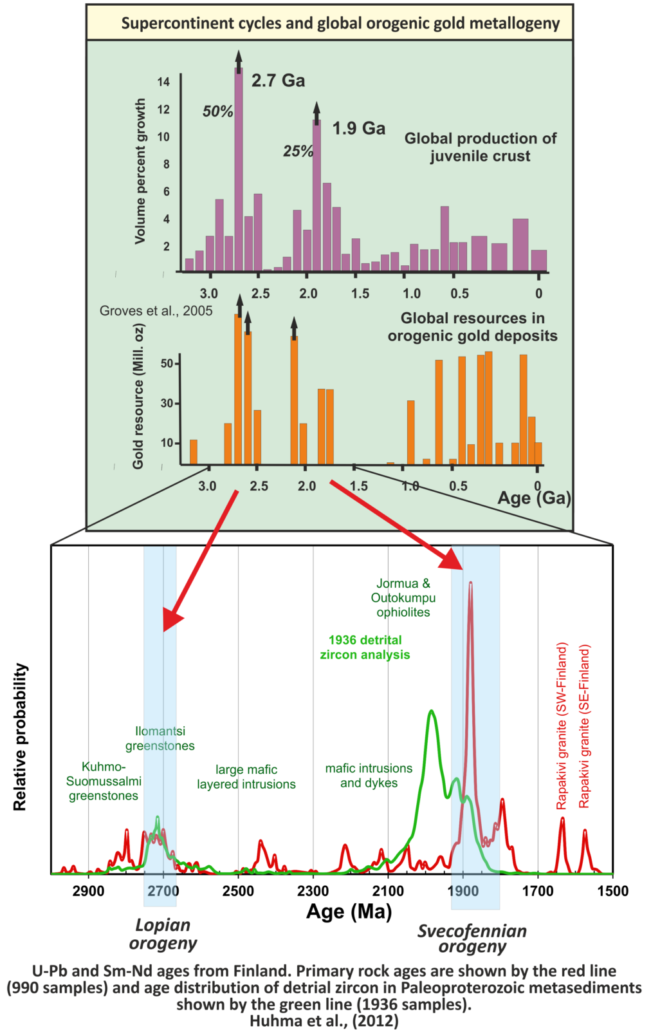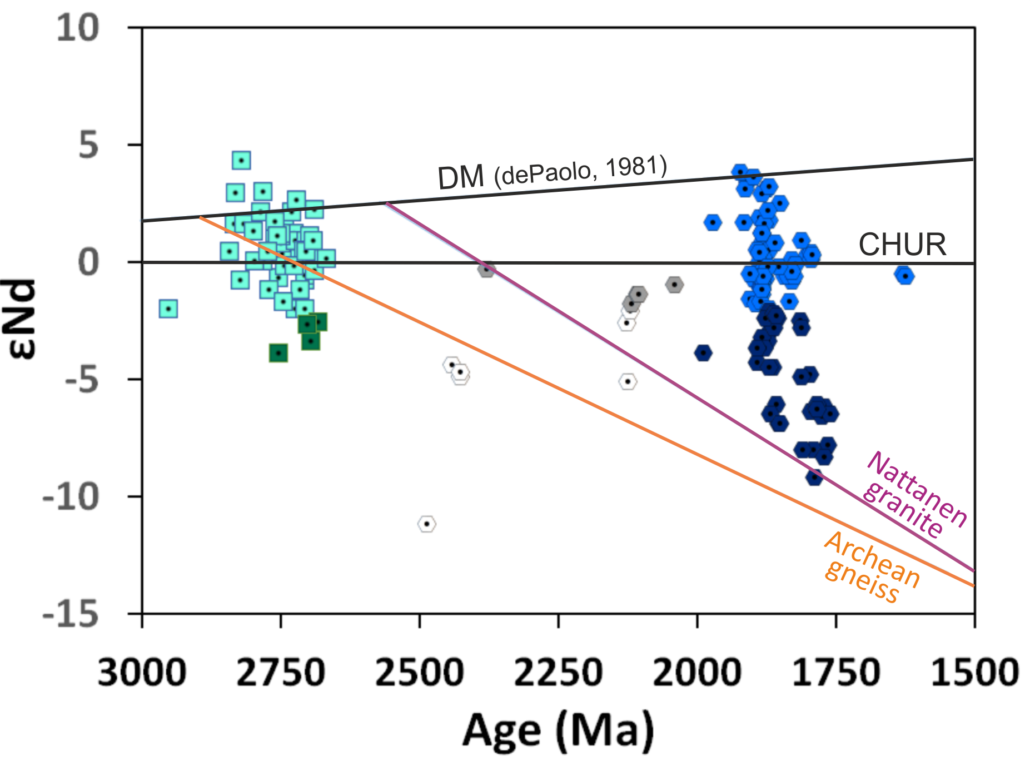Large global resources of orogenic gold deposits were formed in two major time-periods, at 2.75 to 2.55 Ga and at 2.1 to 1.75 Ga during the Precambrian evolution of Earth`s crust. These time-periods coincidence with the formation of large volumes of juvenile crust; e.g. with the assembly of the Archean Kenoraland and the Paleoproterozoic Nuna/Columbia supercontinents along several orogenic belts.
The most common primary rock ages and U-Pb data for detrital zircon from metasedimentary rocks also records these global scale Archean and Paleoproterozoic orogenic events at around 2.7 and 1.9 Ga in Finland. Therefore the accretion-collision zones marked by the greenstone belts in the Achean Karelia domain, as well as the Paleoproterozoic basins that were deformed and metamorphosed during the 1.93-1.80 Ga Svecofennian orogeny in northern, western and southern Finland are the preferred zones of exploration for orogenic gold deposits.

In Finland, the major crust-forming period in the Archean was at around 2.8–2.7 Ga, and only a few remnants of older (up to 3.7 Ga) rocks have been preserved. The neodymium isotope compositions (εNd) for granitoid rocks older than 2.5 Ga suggest to a predominantly juvenile (mantle) origin of the Archean crust in eastern Finland. Larger components of older crust (e.g. from 0 to -2 εNd values) characterize the northern part of the Karelian domain.
The oldest rocks in the Svecofennian domain are ca. 1.93 Ga gneisses and volcanic rocks with initial εNd close to +3 and are thus juvenile new crust. The main suites of the mafic and felsic igneous lithologies were formed at 1.90–1.87 Ga ago, and have initial εNd values of -1 to +3. This shows that many of these rocks have their ultimate origin in depleted mantle with only a slight input of older crustal material in the Svecofennian domain.
The Svecofennian orogeny represents the major crust forming event in Finland. The contribution of older lithosphere in the genesis of 1.95–1.70 Ga rocks is generally high in the Karelian domain in northern Finland, where some granites may represent largely reworked Archean crust (e.g. εNd < -2).
The differences in the sources of the Paleoproterozoic granitoid rocks (e.g. melting of the Archaean crust vs. juvenile origin) reflects the different structure of the crust in the Karelian and Svecofennian tectonic domains. This difference is the possible origin of diversity in metal associations found in orogenic gold deposits in these domains. Large number of orogenic gold deposits in northern Finland have significant concentrations of Cu, Co, Ni, whereas the Svecofennian domain in southwestern Finland hosts mostly gold-only deposits.
(Last update: 20.05.2020)

